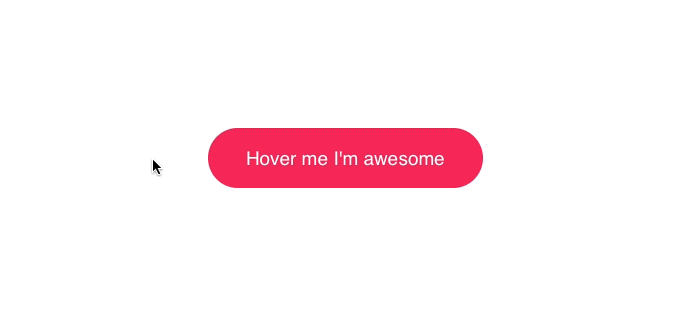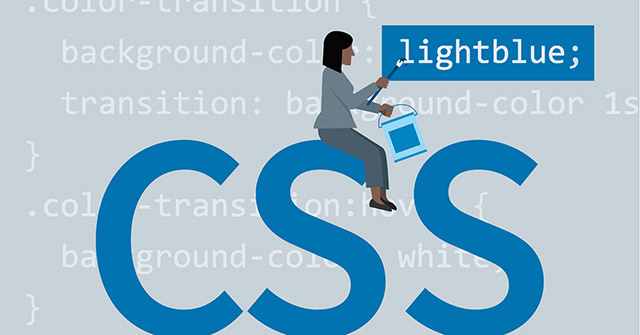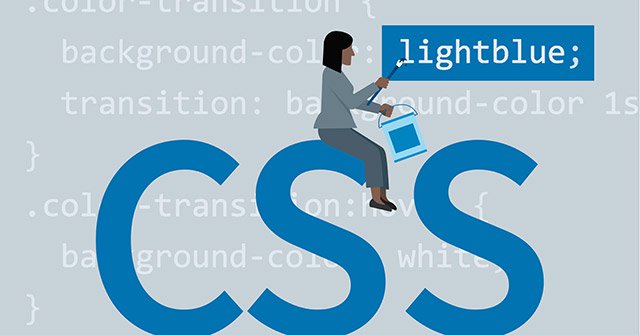How to create an effect when hovering over (hover) with CSS
Website designers are certainly no stranger to CSS - the tool is still used to 'change clothes' for the website interface.The following article will show you how to create fun effects, change colors in the form of gradients, when users hover over a certain part of the web page.

Gradient effect when hovering over the button
Position the mouse cursor
The first step is to position the mouse pointer to track movement by the code below.
document.querySelector('.button').onmousemove = (e) => {
const x = e.pageX - e.target.offsetLeft
const y = e.pageY - e.target.offsetTop
e.target.style.setProperty('--x', `${ x }px`)
e.target.style.setProperty('--y', `${ y }px`)
}
The above lines of code correspond to 3 steps:
- Select the element and wait until the user moves the mouse over it.
- Calculate the position corresponding to the element.
- Save coordinates in CSS variables.
It only takes 9 lines of code to let CSS know the user's cursor position.
Create a gradient effect
Once you have the coordinates stored in the CSS variable, you can use them anywhere in the CSS file.
.button {
position: relative;
appearance: none;
background: #f72359;
padding: 1em 2em;
border: none;
color: white;
font-size: 1.2em;
cursor: pointer;
outline: none;
overflow: hidden;
border-radius: 100px;
span {
position: relative;}
&::before {
--size: 0;
content: '';
position: absolute;
left: var(--x);
top: var(--y);
width: var(--size);
height: var(--size);
background: radial-gradient(circle closest-side, #4405f7, transparent);
transform: translate(-50%, -50%);
transition: width .2s ease, height .2s ease;
}
&:hover::before {
--size: 400px;
}
}
- Wrap the text inside the
spanto prevent the gradient from overflowing. - Start with the
widthandheightof0pxand bring it to400pxwhen the user moves the mouse over.Don't forget to set the transition so the effect is smooth. - Use coordinates to follow the mouse pointer.
- Use
radial-gradientfor the background and select theclosest-sidecircle so that the gradient ends at the closest center corner, if there are two positions that meet the requirement, it will be evenly distributed.
When you get the mouse coordinates, you can create and apply many other interesting effects.Try it and don't forget to share it.
See more:
- CSS is so powerful that it is possible to get anonymous Facebook user information
- Using only HTML and CSS code, one can create a masterpiece full of aesthetics like this
- Top 5 popular CSS Framework that you should keep in mind
You should read it
- How to Create an Orton Effect in Photoshop
- Instructions for creating 3D balloon effect banner
- Instructions for creating photos of sunset effects online
- How to write text to change colors on Facebook to create special effects
- How to create snowfall effect with DesktopSnowOK
- Create a snow effect on the Windows Taskbar
- 14 simple steps to create a snow effect for the photo
- How to create a video with a wavy effect as a Facebook avatar
May be interested
- FLOAT and CLEAR properties in CSS
 the float property is used to move an element to the left or right corner of the space surrounding it, which is essential in formatting the page layout.
the float property is used to move an element to the left or right corner of the space surrounding it, which is essential in formatting the page layout. - Display (inline-block) properties in CSS
 there are some differences between the display of tags,, and,. explain this through a lesson about the value of the display attribute right away.
there are some differences between the display of tags,, and,. explain this through a lesson about the value of the display attribute right away. - Align - Align in CSS
 in css there are many properties that allow aligning an element like margin, padding, text-align, position, float ...
in css there are many properties that allow aligning an element like margin, padding, text-align, position, float ... - Combinator in CSS
 combinator represents the relationship between selectors, allowing combining selectors together as strings.
combinator represents the relationship between selectors, allowing combining selectors together as strings. - Pseudo-Class in CSS
 pseudo-class in css is used to add special effects to some selector.
pseudo-class in css is used to add special effects to some selector. - Pseudo-Element in CSS
 pseudo-element in css is used to add special formats to a selector
pseudo-element in css is used to add special formats to a selector






 Tooltip effect in CSS
Tooltip effect in CSS How to create sky effect for photos with B612
How to create sky effect for photos with B612 Do you know how to create the Like button effect on Facebook?
Do you know how to create the Like button effect on Facebook? How to use Photoshop CS6 (Part 4): Create a fading effect
How to use Photoshop CS6 (Part 4): Create a fading effect How to Create an Orton Effect in Photoshop
How to Create an Orton Effect in Photoshop